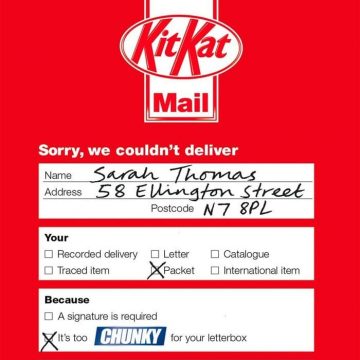What Is Advertising?
Advertising is more like a form of marketing communication, it’s one of the crucial elements of the organization’s marketing strategy. Businesses across the globe use advertising to spread the word about their services and products through several channels.
What’s more, today’s fast-paced tech world has changed the landscape of advertising, with broadcast and print serving as conventional formats, whereas digital format serves as the contemporary option.
Also, with advancements in tech, companies have the ability to gain a new customer base and track the performance of their ad campaigns.
11 Different Types of Advertising
Before you let your imagination fly and think of catchy jingles or clever slogans, you need to consider what kind of ad campaign you would like to run for your business.
By no means are we saying creativity doesn’t matter; IT DOES, but targeting your audience and choosing the right platform is what matters the most in achieving the company’s strategic goals?
Here’s a list of some of the types of advertising with examples that you can choose and pick wisely!
Television Advertising
Are you seeking an extensive reach that can cater to a large market? Television advertising can be the answer to your business needs. That’s because it has the edge of sound, movement, color, and sound to persuade buyers to buy the product.
Albeit it’s costly, if you are looking at the bigger picture, more customer base, extensive reach, it’s completely worth it.
Companies can market their services and products through 20, 40, and 60 seconds television commercials. Nevertheless, the cost of the ad depends on other several factors, including:
- Length of the ad.
- The number of networks.
- Geographic reach.
- Time of the day.
- Frequency of airing
Example – Wendy’s Where is the Beef
It is perhaps one of the most iconic and catchy taglines of the 1980s; Burger King and McDonald’s were ruling the fast-food market because they were promoting the size of their burgers by naming them “Whopper” and “Big Mac.” Wendy had to come up with something more novel and catchy to grab the public’s attention.
Wendy’s clever slogan TV commercial,“Where is the Beef” had a lasting impact on fast food advertising. Never before had a fast-food burger joint gained such cultural clout; even today, people utter the catchphrase when seeking more substance.
Radio Advertising
If your target audience listens to a particular radio station, radio advertising can come in very handy to reach your target market and gain new customers.
he target audience can hear radio ads while running day-to-day errands (doing household chores, driving, etc.), radio also enables the repetition of ads just like TV commercials that, in turn, help organizations get more recognition and customer base.
Example – Sprite Radio Ad
When it comes to an ad that is short, loud, crisp, and sweet, Sprite tops the list. With this ad campaign, the company was able to target its audience without having to say much.
Yes, the slurping sound effect gave all the feel to its audience.
Print Advertising
Print advertising refers to the advertisements that we often see in magazines, flyers, newspapers, etc. Businesses can advertise their services and products in the local newspaper, whether within separate classified sections or either throughout the paper, to reach a target audience within the geographic region.
Example – Ecovia: Stop the Violence
Several companies came forward to create awareness about car accidents. However, none was successful in achieving a massive social media awareness the way Ecovia did with its “Stop the Violence” print ad campaign.
The company preferred using body illustrations to speak to the target audience, trying to convince them, “don’t drink and drive.”
Social Media Advertising
How to keep up with today’s digital-driven world? We are living in a golden era, where social media can either make or break your business. Businesses worldwide use social media ads to promote their services and products.
With social media ads, companies have the ability to target a specific customer base, age group, etc. Also, the companies have two options; they can either pay platforms for displaying their ads or opt for an organic method.
Example – Sephora
It is a multinational beauty retailer famous among women of all age groups.
Since videos are one of the vital components that exhibits a high-engagement rate, so Sephora came up with a stunning video ad campaign to reach its target audience. The campaign performed well than the previous campaigns with 32% higher return and 41% increase in click-through rate.
Paid Search Advertising
It is a type of online advertising that is usually known as PPC (pay-per-click). Businesses that prefer using paid search advertising only pay a fee when people click on their advertisements. They compete for specific keywords, usually connected to their industry, as well as the visibility of their ads on the search engine.
Example – Converse “DOMAINATION”
Converse – a global footwear brand, teamed up with one of the marketing agencies, Anomoly, to create an innovative and novel way to communicate with its teenage audience.
Instead of selling their products directly to the targeted audience, the company employed Google AdWords to connect with the audience by being relevant and encouraging conversations.
Their strategy was to come up with such terms that their potential customers used to search. This way, the global brand was able to fetch the attention of its target audience in a fun and creative way.
Outside Advertising
Outside advertising is also called out-of-home ads because it’s the advertisement that people see outside their homes. For instance, the ads we see on the billboards, transit vehicles, inside subway cars, and on the side of the bus.
Companies usually use outdoor ads to grab the attention of a large population within a geographic location. All in all, businesses prefer using bold images and fewer words so the advertisement can be easily understood.
Example – McDonald’s Clock Billboard
Nothing can beat this fast-food chain, whether it’s about coming up with creative slogans or outdoor ads billboards. Yes, the famous fast-food multinational company stands out with its clock billboard that reminds you they are open 24/7.
Mobile Advertising
Mobile ads have become one of the most important tools for marketing because of the explosion of social media. Also, mobile ads can easily reach the users/target audience via mobile device with internet access, such as a tablet or smartphone.
Users can see the mobile ads through different channels, including web pages, within mobile apps, or social media. For instance, if someone is playing a video game on the mobile, chances are they will encounter ads for similar games in between rounds of playing game.
Example – Snapchat Ad & Filter: Lucky Charms
Lucky Charms wanted to do something out of the box for St. Patrick’s Day. They planned to team up with Snapchat to create an innovative and gamified filter for the promotion of their unicorn-based cereal.
The campaign was so successful that over 12 million Snapchat users used the filter, giving Lucky Charms a tremendous engagement rate on the site and a branding boost.
Direct Mail Advertising
It is a type of print advertising in which adverts are usually mailed to the target audience. Catalogs, flyers, newsletters, and brochures are some examples of direct mail ads.
This strategy allows businesses to identify more targeted demographic than any other type of print ads formats because advertisements are delivered through a direct mailing list.
Example – Nestle Kit Kat Chunky
Who doesn’t like receiving a free chocolate bar voucher in the mail? Well, that’s what Nestle did to promote its product, Kit Kat Chunky.
They encouraged the users to claim their Kit Kat from the local corner shop, with a personalized note, “we are sorry we couldn’t deliver your parcel” card claiming that the product wouldn’t fit in the mailbox owing to its chunkiness.
Thus, the company was able to see the surge in the purchase by customizing each leaflet and exciting people’s taste buds.
Display Advertising
Display advertising is a strategy that promotes a product or service through visuals, i.e., images and videos on web pages, social media platforms, and various display networks.
Display advertising encourages its target audience to click on the ad and redirect to the advertiser’s website to complete the direction action (purchase).
Remarketing and retargeting are a few methods used in display advertising. For example, when a user visits a website, he might accept the browser cookies that grant permission to that site to track his journey.
If the visitor does not make a purchase, the advertiser (brand) may target him on another website by placing ads of products and services to influence his purchase decision.
Product Placement Advertising
In product placement ads, companies have to pay to have their services or products inserted in media content, such as movies or television shows. Although the content doesn’t directly promote the product, it is still accessible to the target audience.
This strategy helps businesses reach an even targeted audience more privately.
Example – Reese’s Pieces in E.T (Extra-Terrestrial)
Reese’s are the chocolate miniatures of the Hershey Company that were featured in one of the most iconic films of 1982, the Extra-Terrestrial (E.T).
Did you know that this product placement ad led to a surge in sales by a whopping 300%?
Public Service Advertising
Public service advertising promotes a cause in the general public’s best interest. It is also known as a public service announcement (PSA) or a community service announcement (CSA). These ads are broadcast on television, radio, and newspapers to reach the masses.
The primary aim of the PSAs is to aware the audience about a specific issue and alter their attitude.
This type of advertising is more often used by government agencies and non-profitable organizations to educate consumers about specific issues, i.e., health and safety.
Also Read: 4 A’s of Marketing
The Takeaway
Choosing what type of advertising you need to run for your business is indeed an overwhelming endeavor as it can make or break your brand name.
Every advertising campaign has its own perks; you need to determine what you are aiming to achieve, only then will you be on your way to mastering the ad area.
Source: Marketing Tutor







